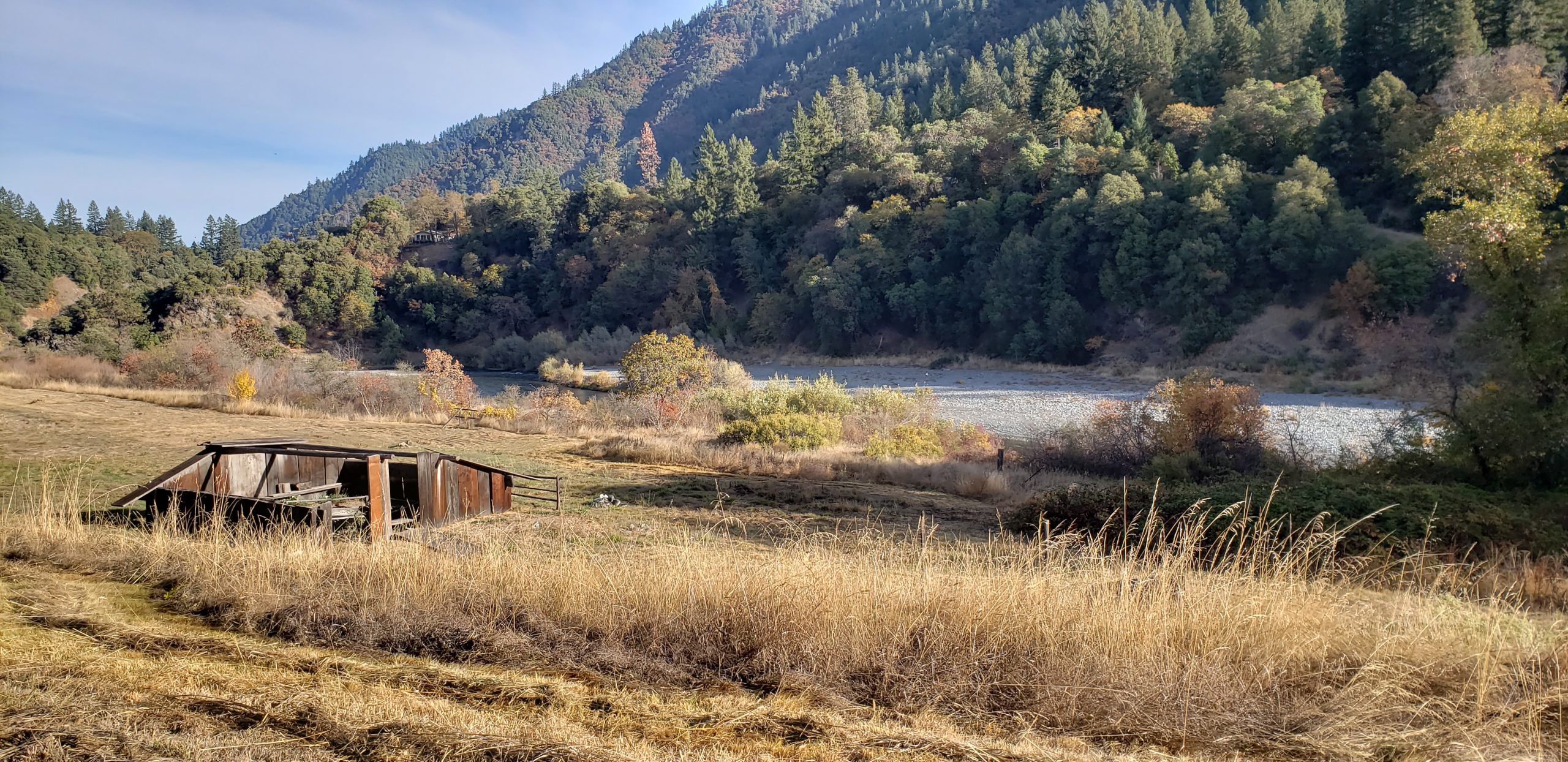
Members of the Tsnungwe Native American tribe (now known formally as the Tsnungwe Council) have resided along the Trinity River in Northern California for thousands of years. They describe their original ancestral village, Hlel-din (pronounced “clay-el-ting”), located at the confluence of the Trinity River and South Fork Trinity River, as “the place where the rivers come together.” With a mild climate and rich with natural resources, Hlel-din became a cultural and economic center for tribes along the Klamath, Trinity, and South Fork Rivers. However, the arrival of white settlers in the mid-1800s led to the Tsnungwe people being pushed from their land and ultimately being fully displaced.
On May 19, 2020, after more than 150 years of not having legal access to its homeland, the Tsnungwe Council regained the right to access what was once its ancestral village, Hlel-din, to gather traditional plants and medicines and to perform ceremonies; the Council also gained the right to prevent the land from ever being developed or altered from its natural condition. And yet these rights were not obtained by the Council through acquiring ownership of the land, but rather through the conveyance to the Council of a conservation easement.
A conservation easement is a real estate interest that serves to protect the environmental, agricultural, cultural, and/or scenic attributes of a piece of property in perpetuity. The owner of the property continues to own the underlying fee interest, while a nonprofit or governmental entity or Native American tribe holds the conservation easement and sees that its terms are upheld. The holder of the easement will visit the property, typically annually, to confirm that the owner is abiding by the easement, and, if a violation is discovered, may pursue legal and equitable remedies to stop the violation and repair any damage. In the Hlel-din conservation easement, the Tsnungwe Council is also granted certain additional rights to undertake cultural activities.
Conservation easements are technically considered “easements in gross,” meaning that they are not appurtenant to an adjacent property, and are governed by Cal. Civil Code sections 815 – 816, colloquially known as the conservation easement enabling act. The act provides the applicable purposes for which easements may be granted, eligible easement holders, available remedies, and other requirements. The act also provides that all conservation easements must be granted in perpetuity.
The entities eligible to hold conservation easements in California include local and state governments, qualified nonprofit organizations, and certain Native American tribes. In particular, the act provides that, to be eligible to hold a conservation easement, a Native American tribe must either be federally recognized or “a nonfederally recognized California Native American tribe that is on the contact list maintained by the Native American Heritage Commission to protect a California Native American prehistoric, archaeological, cultural, spiritual, or ceremonial place, if the conservation easement is voluntarily conveyed.”
The conservation easement at Hlel-din was conveyed by the landowner to the Council to mitigate for potential impacts to cultural and natural resources from a proposed agricultural operation the landowner is undertaking on nearby property. While not technically required to be conveyed, the conservation easement served to offset any possible negative consequences to the cultural resources on the neighboring land, thereby allaying the concerns of the Tsnungwe tribal government about the proposed agricultural operation and garnering the Council’s support for the project.
As noted, the conservation not only ensures that Hlel-din will never be developed or materially changed from its current natural condition, but it also grants the Council certain unique rights to undertake the following cultural, research, recreational, and land stewardship activities:
- Restore, conserve, and steward the Property’s natural and cultural resources;
- Promote indigenous land and cultural stewardship through the application and sharing of traditional ecological knowledge related to traditional conservation and sustainable resource management practices, including for example: plant gathering; collection of seeds; digging bulbs/roots; cutting and pruning vegetation; tending of plants; and planting and dispersing seeds and bulbs;
- Provide educational services about traditional cultural and ecological knowledge, including traditional land management principles and resource management methods that reflect Grantee’s cultural values;
- Host and engage in traditional recreational, cultural, ceremonial, and educational activities and gatherings, including without limitation: ceremonies, dances, games, and knowledge-sharing workshops, for members of Grantee and its guests and invitees;
- Perform a cultural resources survey of the Property to identify and determine whether additional cultural resources or archaeological sites are in need of protection, including ongoing documentation and monitoring of any such cultural resources, and perform other scientific and cultural research; and
- Install cultural improvements, subject to Grantor’s review and prior written approval pursuant to the process described in Section 7 below.
These cultural rights augment the more typical rights granted to an easement grantee to access the property to monitor compliance with the easement terms and to enforce the terms of the easement.
While working on this conservation easement, members of the Tsnungwe Council explained that the outright ownership of the land was less important to the tribal members. Instead, knowing that the land would never be developed and having the legal right to access the land to gather and perform ceremony was deeply significant to the Council. In this way, conservation easements could be a perfect tool to fulfill the hugely important function of returning protection, stewardship, and cultural use of a landscape to the land’s original inhabitants without necessarily involving the conveyance of the underlying fee.
To read more information about the history and significance of Hlel-din to the Tsnungwe people, please visit the Tsnungwe Council’s website.
